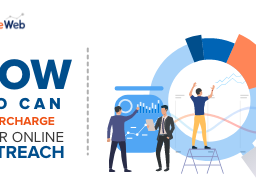Acquiring organic traffic for an eCommerce website has never been an easy task. It requires expertise and structured actions. Powerful SEO is the key to empower your eCommerce business and generate more leads. Search Engine Optimization (SEO) improves the visibility of a website on search engine result pages.
Do you want to get more traffic to your eCommerce site? Go through this article and you will get your answer. This article explains the pro 10 tips that help an online store to boost their presence and attract organic traffic.
Here are the pro 10 eCommerce SEO tips that increase sales through generating traffic.
#1. User-friendly site structure
A properly structured website is the first step to improve eCommerce SEO. A user-friendly site allows the user to surf flawlessly on the site and perform the intended action (making a purchase).
Also, a well-structured site will be easier for the ranking on the SERPs (search engine results pages). The breadcrumb navigation, layout, fonts, and other elements should be organized appropriately.
#2. Include sitemap
A sitemap is a quick access point that enables the visitors to understand the hierarchy of your website and pages in a single glance. Further, it informs Google and other search engines about the organization of your site content and makes it easier to crawl.
For instance, if a product page is inserted in your sitemap, a search engine can surely find and index the web page. It means that buyers looking for something particular from that search engine will be able to find it.
#3. Unique product description
Each product page needs to have a unique description of the information that users are looking for. It will improve the chances of purchase and recommendations. The comprehensive details about a product should include its features, benefits, and FAQs.
These descriptions should be written in such a way that entices customers to make purchases. For example, use bullet points while listing the details about a product. Try to emphasize the benefits of a product rather than simply stating what it does.
#4. Select the right keywords
The keywords are essential to get a higher position of an eCommerce site on search engine result pages. Besides, it helps the site users to land on the product pages they are searching for.
Perform the proper keyword research and select the best keywords that will allow users to roam around the site. Whether you want to get ranked on the first page of the site or increase organic traffic, selecting the right keywords is a must for eCommerce SEO.
#5. ALT tag optimization
Optimizing images using the keyword in the ALT tag improves the chances of image crawling. Search engines can easily understand an image with appropriate alt tags and display it with relevant searches. Further, in case of a technical issue when an image can not be loaded, alt tags will be displayed instead of an image.
#6. Useful content
Do not make your audience read text walls. Rather it should be presented in an appealing way for better interactions. Also, focus on creating content that catches their attention.
Shortening paragraphs, short descriptions, or catchy phrases work well for an eCommerce website. When you curate content to make sure to add meta title, description, keywords for the on-page SEO. It will help the search engines to rank the content easily.
#7. Improve website speed
Not only visitors will turn away but also the search engine will reduce because of the slow speed of a website. Mostly, customers are in a hurry while surfing on an eCommerce website. If you have a faster loading site that will keep them engaged for a longer time.
Hence, the chances of their making purchases increase. And, it gets higher search engine rankings. As a rule of thumb, a website loading speed should not take longer than 3 seconds.
#8. Regularly check to index
Checking the indexing of an eCommerce website is a must requirement. Even though the site maps are generated and updated, it will be beneficial to add those to the tool like Google Search Console.
The sitemap.xml is a list of all the important pages of an eCommerce website. This makes sure that search engines are finding and crawling all the webpages of your site.
#9. Optimize category pages
Category pages for an eCommerce website are as important as product pages. Add an H1 tag for the category, and ensure that there is only one page for each of them. From the title, description to images everything should be optimized properly for each category page.
The optimized category or subcategory pages helps search engines to crawl and understand your site’s structure easily. Also, the users can easily find out the products they are looking for.
#10. Use internal links
Internal linking quickly eCommerce SEO rates. It boosts the performance of under performing pages and improves the chances of conversions. For instance, adding an internal link on a product page with higher organic traffic encourages the consumers to visit the other page. Generally, internal linking is done to increase purchase.
Even though generating more traffic on the eCommerce site is a tough task, following these 10 tips will surely help. Surely. SEO takes time, but it generates fruitful results at the end. Employ these tips for your online store’s site and see the difference. Along with increased online visibility, you will be able to attract potential customers.
If you are struggling with an eCommerce SEO for your online store, contact with us to discuss the opportunities.


